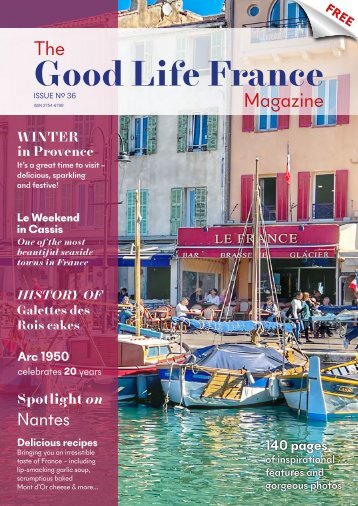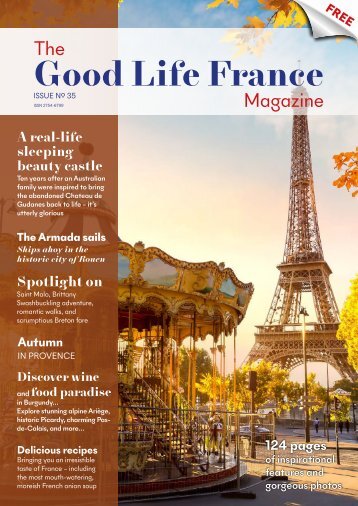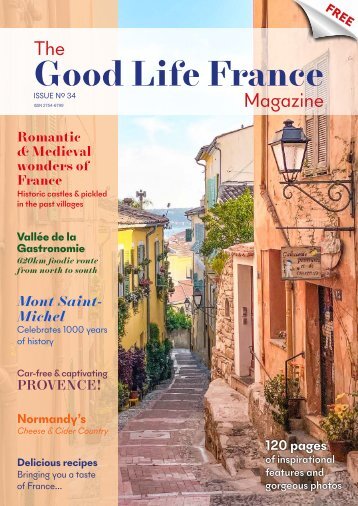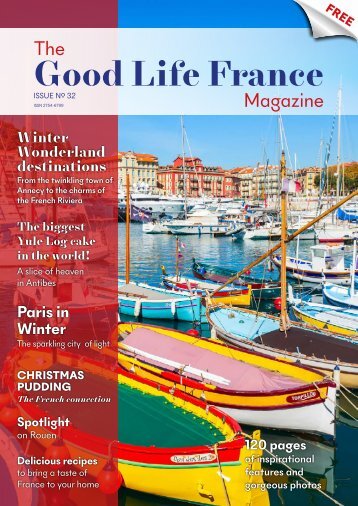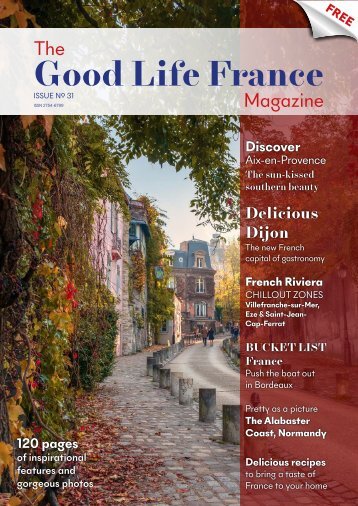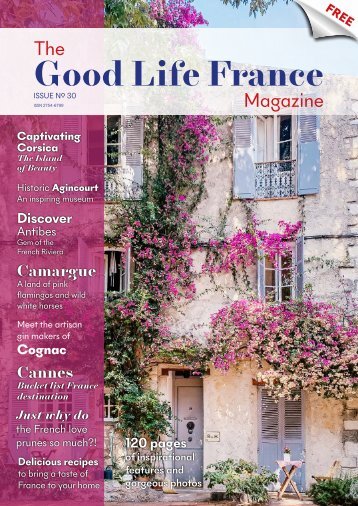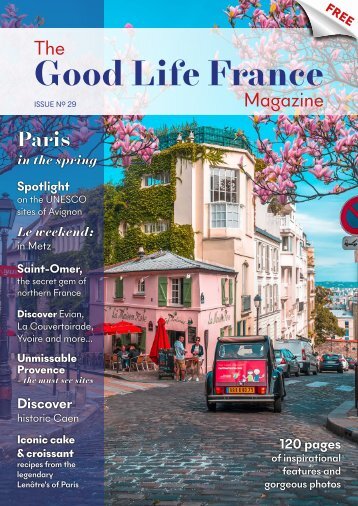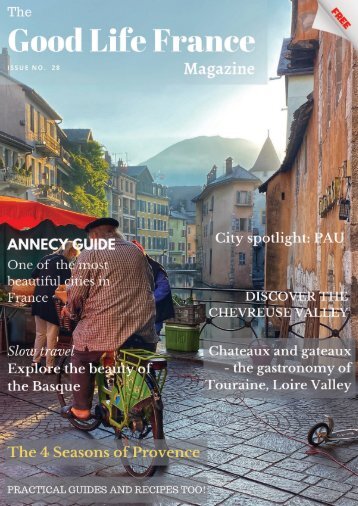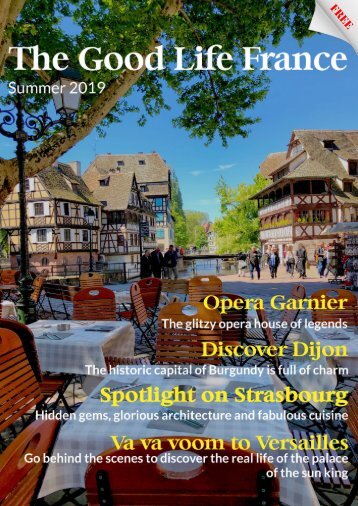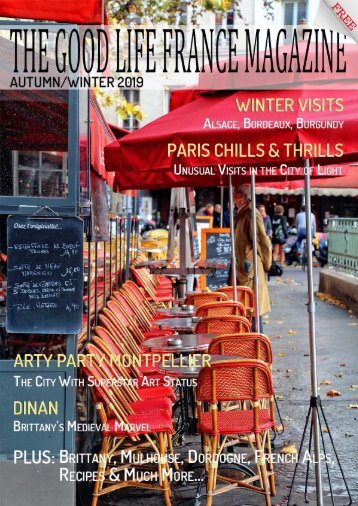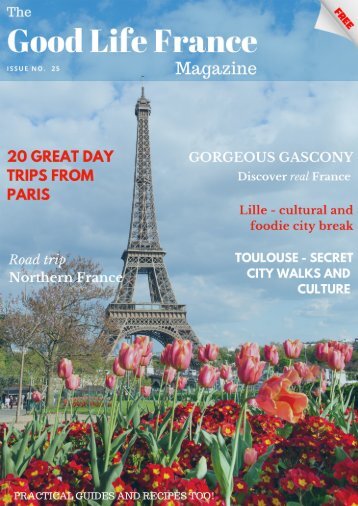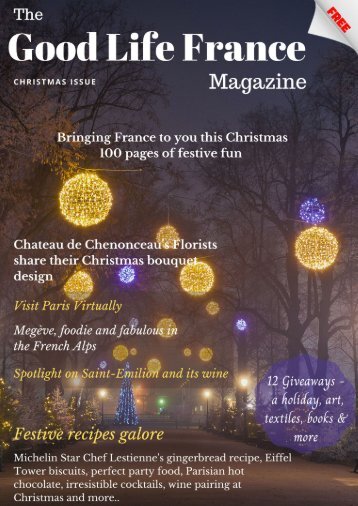
The Good Life France Magazine
The Good Life France Magazine brings you the best of France - inspirational and exclusive features, fabulous photos, mouth-watering recipes, tips, guides, ideas and much more...
Published by the award winning team at The Good Life France
Issue No. 17
Buttons, baubles and
Buttons, baubles and beads in the fabric district of Paris Material girl Judi Castille explores the famous haberdashery shops of Paris On a cold, crisp April morning, with numb fingers, and an almost feverish determination I searched for buttons. Muscling locals aside I pounced on another matching set. My fingers became blue, nose snuffly, but the button search went on and on, till every button had been turned and either discarded or bagged as a treasure found. The assistant in the shop took the bulging bags and pointed me to the heater unit to thaw out whilst she weighed and tagged the buttons. I shivered and dripped but felt elated. Over 100 buttons – 10 buttons per euro, what a bargain. Never mind what I would do with 100 buttons, it was the elation of finding such a shop in the first place. Mes Folles De Soeurs (which translates as My crazy sisters”), is on a corner and easy to miss. The boxes are outside, full of buttons, notions and zips. When the rain comes, you get wet, but who cares when you are a button seeker, fabric fan or love material things.
The Paris fabric area in Montmartre, just below Sacre Coeur is a revelation. A whole district devoted to fabric, tassels, ribbons, bias-binding and buttons. And it’s been this way for many years. In 1882 Emile Zola published Au Bonheur des Dames (The Ladies Paradise) telling the tale of the rise of a fabric empire in this part of Paris. For me it’s like a candy store, the choice is endless. My pulse raced taking it all in. Boxes on the pavement and on the first floor were labelled “Coupons”, remnants at 1-3 euros. For patch-workers there are packs of little squares at discounts and buttons are sold by weight. Don't be shy, roll up your sleeves, rummage and dig deep for those bargains and savour the fabrics. Lawns, toiles, wools, jersey, cashmere, silk, gabardine, leather, they are all here and more. And where best to start than Marché Saint Pierre, six floors devoted to inspiring sewers, old-hands and those new to the craft. Here you can compare textures, weights, colour, prices and come home with bolt upon bolt of fabrics or just a few remnants to make a cushion to remind you of Paris. In the late 1800s the store Marché Saint Pierre became the byword for fabric. Today, broad beamed wood floors and old cash registers in cubicles where you go to pay are historic throw-backs that make this place magical. I hovered by the assistant who measured and cut, metre rule in hand and large haberdashery scissors to the ready. In the 1930’s Tissus Reine, a more upmarket shop came on the scene. Again, six floors, the fabrics are more designer and more organized. Here your fabric is cut and held for you. A small hand-written ticket is issued and you queue to pay at an oldfashioned cashier desk. If you buy notions [all those little bits n bobs you need for sewing but can’t recall their name), you are given a basket that you fill, leaving it with an assistant, who tots up the whole on a tab, like adding beers to the menu. The cashiers still use the “air” system to send notes to the accounting office, an overhead (and several decades ago, pioneering) transporting system that sends pods of notes across the ceiling and into the offices for counting. On the ground floor, little mannequins are draped in exquisite miniature outfits made from the fabrics available. The store is packed with women who it seems have the same enthusiasm as me and the shop does a roaring trade. On the upper floor is a huger pattern section – Vogue and Butterick included. I love the old-fashioned terrazzo floors here, made from multiple chips of marbles and tile. You could be in the 1950’s with all the hands-on measuring, wooden cabinetry and the bump-bump sound of fabric bolts being turned and measured on cutting tables. Tables are piled high, shelves are stuffed with pins, bobbins, tape measures, pin cushions, embroidery thread and dedicated button sections – neatly labelled and tubed and not sold in silly packets of four. Next MBF Decoration – where I bought an ornate jacquard Belgian fabric. It was too expensive to buy a meter, so I asked for a small sample that included most of the repeat design. This piece cost me 60 euros, but I felt I would faint if I had to leave it behind! For embellished and heavy-weighted upholstery fabrics, Ronsard Decors – Les Meruelles De St Pierre – covered all my bias-binding and notions needs. This place is paradise for a seamstress – Zola was quite right!
- Page 3 and 4:
Bonjour! Welcome to the winter issu
- Page 5 and 6:
contents Features 8 A tale of two c
- Page 7:
P 88 88 give aways Win a row of gor
- Page 10 and 11:
The Medieval City of Carcassonne Th
- Page 12 and 13:
The inside track The Medieval city
- Page 14 and 15:
Left: Le Parc Franck Putelat restau
- Page 16 and 17:
astide saint-louis Back in the midd
- Page 18:
The weekly market (Tuesday, Thursda
- Page 21 and 22:
information Getting to Carcassone:
- Page 23 and 24:
When Louis XIV visited Orange, he s
- Page 25 and 26:
The theatre at Orange continues to
- Page 27 and 28: The inside track The centre of Oran
- Page 29 and 30: Stay at: Au Vin Chambré is a lovel
- Page 31 and 32: There’s a little on-site shop whe
- Page 33: But the famous golf courses of the
- Page 36 and 37: If you arrive in Nimes via train as
- Page 38 and 39: More Roman stuff Two thousand years
- Page 40 and 41: The Inside Track Late night dinners
- Page 43 and 44: Nice Carnival for winter fun in the
- Page 45 and 46: Above: the house where Matisse once
- Page 47 and 48: We asked our favourite Paris locals
- Page 49 and 50: Photo: Victor Dapremont Christmas e
- Page 52 and 53: Laval, Mayenne Pays de la Loire Jan
- Page 54 and 55: Anyone will tell you, go to L'Escar
- Page 56 and 57: Robert Tatin museum - weird whacky
- Page 58 and 59: Lactopole the world’s biggest dai
- Page 60 and 61: Photo: Eric Litton, Wikipedia.fr
- Page 62 and 63: French soldiers fighting in Algeria
- Page 64: This is a critical moment in the ri
- Page 68 and 69: Alpes d'Huez The island of the Sun
- Page 70 and 71: Left: Justine and family enjoy the
- Page 72 and 73: “Fashions fade - Style is elegant
- Page 74 and 75: Soir Long collection board Spring-S
- Page 77: There are six videos which give a f
- Page 81 and 82: I had no idea. Yet my wardrobe of s
- Page 83 and 84: I entered and saw at once all was o
- Page 85 and 86: opportunity to use to use the ladie
- Page 87 and 88: October This beautiful photo of Ann
- Page 89 and 90: ways rry tickets with DFDS - e worl
- Page 91 and 92: KEEP IT LOCAL Use local workmen for
- Page 93 and 94: egistration and insurance, this wil
- Page 95 and 96: Left: typically Gascony above: the
- Page 97: I was disappointed, to say the leas
- Page 101 and 102: 2. As a qualified financial advisor
- Page 103: courtyard came through the windows
- Page 106 and 107: Author Keith van Sickle investigate
- Page 108 and 109: Instructions: Preheat the oven to 1
- Page 110 and 111: Galette des rois cake Ingredients (
- Page 114: My Good Life in France At the end o
Inappropriate
Loading...
Mail this publication
Loading...
Embed
Loading...



